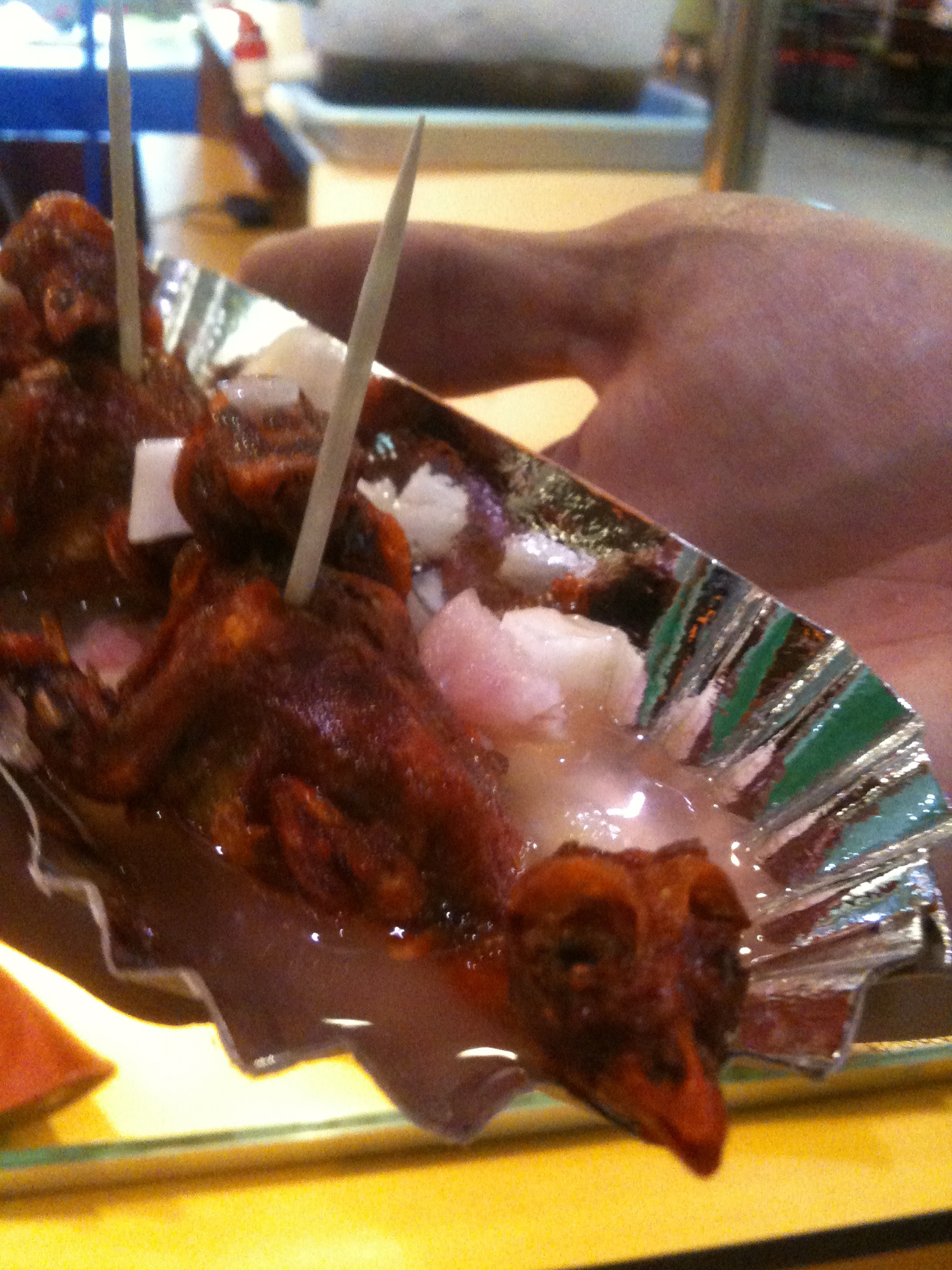Balut, a new kind of Easter egg
I've never celebrated Lent and the Easter season in the Philippines. Maybe next spring, perhaps. Many of my Facebook cohort in past days debated about and questioned the origin of Christian Easter symbols and traditions popular in the United States like eggs, egg hunts, dying Easter eggs in pastel palettes and Easter bunnies. I'd heard long ago - thanks, Catholic school - that the egg symbolizes the tomb of the savior because of its illusion of inanimate that springs to life in a few weeks. (Basically the symbols and traditions of Easter can be traced to pagan rituals of spring, fertility and sex. Links to follow.)
Can I ask some fun-loving Filipino or Filipino American parents, in the spirit of tomorrow's April Fools' Day, to please hide a few lavender- or pink-dyed balut in their children's Easter egg hunts today?
What are balut, you ask?
Balut are boiled duck embryos incubated to a partial maturity of 17 to 22 days, depending on how "done" you like them. They are a Filipino delicacy, sometime rite of passage or aphrodisiac, should claims of the last-mentioned are to ever be believed.
The common way I've heard balut placed in the context of cuisine for Westerners goes like this: If we eat eggs - scrambled, over easy, hardboiled... what's known as "the regular way" - and we also conversely eat mature chickens, let's imagine a timeline connecting the egg stage and the chicken stage, during which the balut/embryo stage falls. If we eat what's at the beginning and end of this continuum or timeline of a chicken, why not eat everything in between, too? That argument may or may not fly for you.
Depending on one’s taste for “doneness,” a consumer chooses a younger or older balut. The older the balut, the more mature the embryo is: firmer formed bones, beak and feathers. From the duck hatchery, street vendors buy batches of embryos and cook them at home. What the vendors boil the balut in – clean water, vinegar, soy sauce, or any flavorings - is what distinguishes one’s product.
In my research for Street Food Around the World, I had my first balut this summer. It's incredulous to me that I managed to dodge consuming the most infamous of Filipino food for this long. A few bottles of San Miguel Cerveza Negra and an easy drinking pitcher of a Malibu-infused concoction named Weng Juice at a Pittsburgh Steelers fan bar in Malate, we stumbled out to our local neighborhood balut cart. For my lack of videography skills and in the interest of time, I'll post the profanity-laden video later, if I can get sign off from the other parties involved and figure out how to delete my expletives. Street traffic goes by, my companions get propositioned by the "ladies of the night," and you'll see what a balut face looks like (mine).
"Don't look at it" was the balut-eating advice echoed by all. I second this, and add "Don't smell it or smell your hands afterward."
Now wouldn't it be simply memorable (read: possibly traumatizing) for your child to find and open one of these Easter eggs, with our fine feathered friend here, disguised cleverly in Paas, in place of chocolates or Jolly Ranchers? As far as I can tell, balut have nothing to do with the way with Easter is celebrated today in the Philippines.
I've heard it said on numerous occasions that the Filipino brand of Catholicism can be unique, and I think that's because the sacred and profane are mixed. That's one way to think of it. Another way: pre-Christian, pre-colonial spiritual traditions provide the (strong) undercurrent for the Roman Catholic faith floating on the surface. Much of the Western press covering the Philippines now have published stories and images of the ritual of some Filipino Catholics to crucify themselves, with five-inch nails, in honor of the Easter holiday. This article, published yesterday by the Toronto Sun from Reuters' Michaela Cabrera, depicts the scene as "carnival-like." That's not really saying much, as other Filipino religious holidays are filled with exuberant displays of food, ceremony, pageant and decoration.
Related links:
- Heartthrob actor Zac Efron was in Manila during my stay, too, for a promotional tour with local (?) fashion label, Penshoppe. He tried balut, too.
- In Key Ingredient, Balut edition, Chicago Reader's Julia Thiel talks with chef Kristine Subido of Wave about her use of the iconic ingredient.
- Facebook meme on origins of Easter symbols turns out to be left of accurate, reports Megan McArdle of The Daily Beast.
You may also like to read:
- How to cook Filipino dishes like
- Lugaw, rice porridge
- Chicken adobo (a classic!)
- Ginataan bilo-bilo, a sweet soup snack
- Halo-halo - the dessert to beat all desserts
- the Sorsogon treat pili panutsa or conserva.
- What is Your Favorite Filipino Street Food? (sarahlynnpablo.com) Ano ba ang paborito ninyong street food sa atin? I’ve written a chapter on Filipino street food for a book, Street Food Around the World (ABC-CLIO, 2013)!



